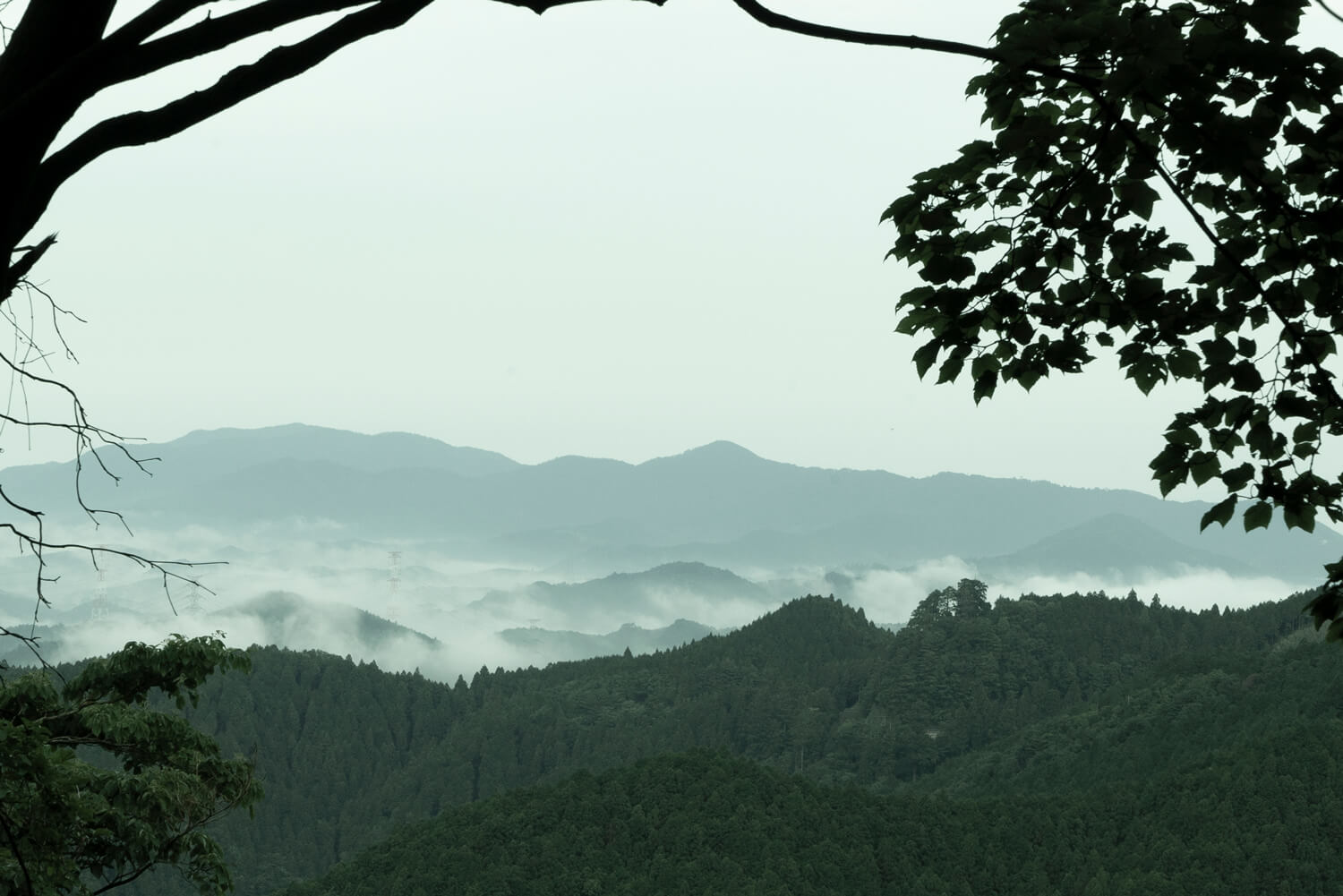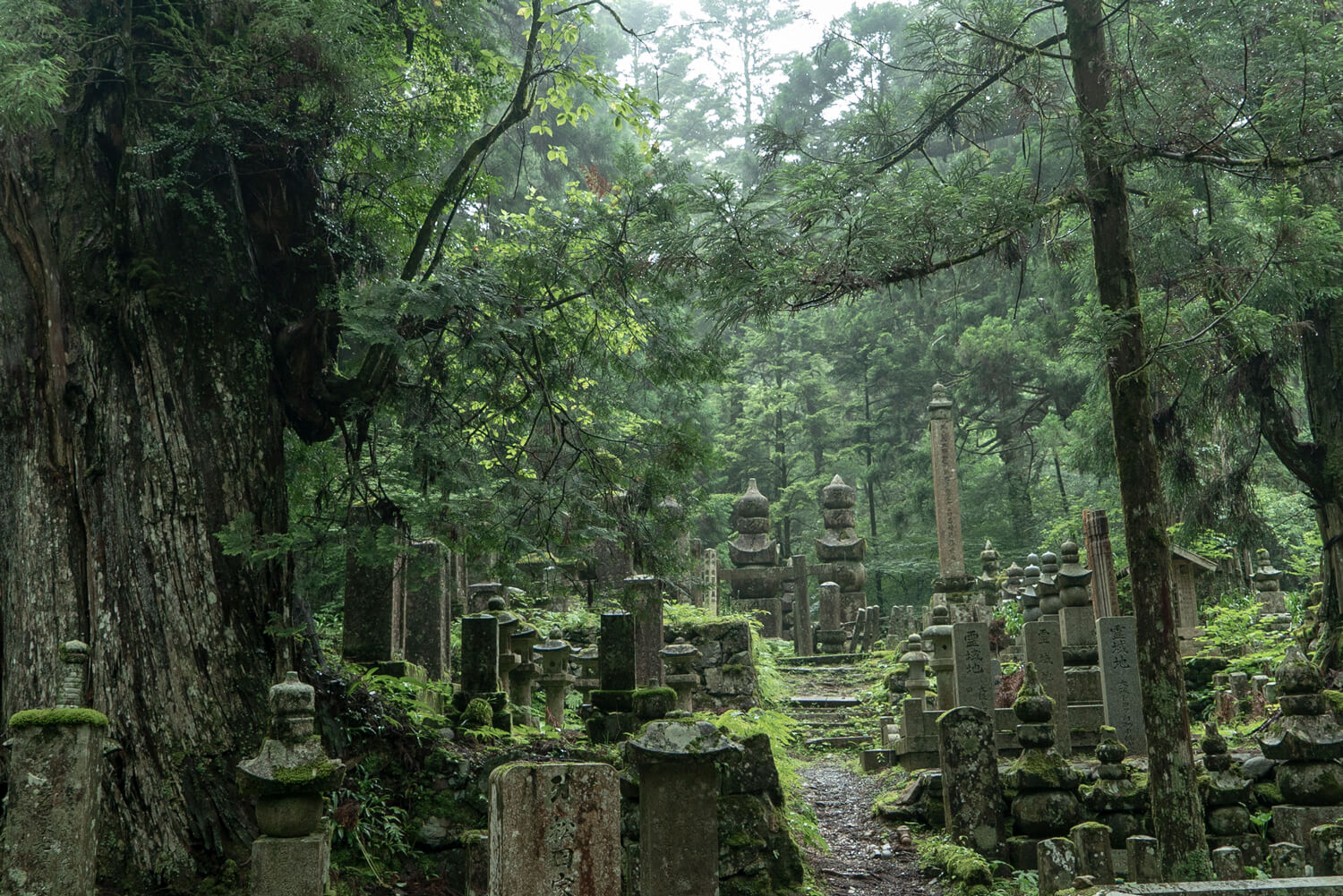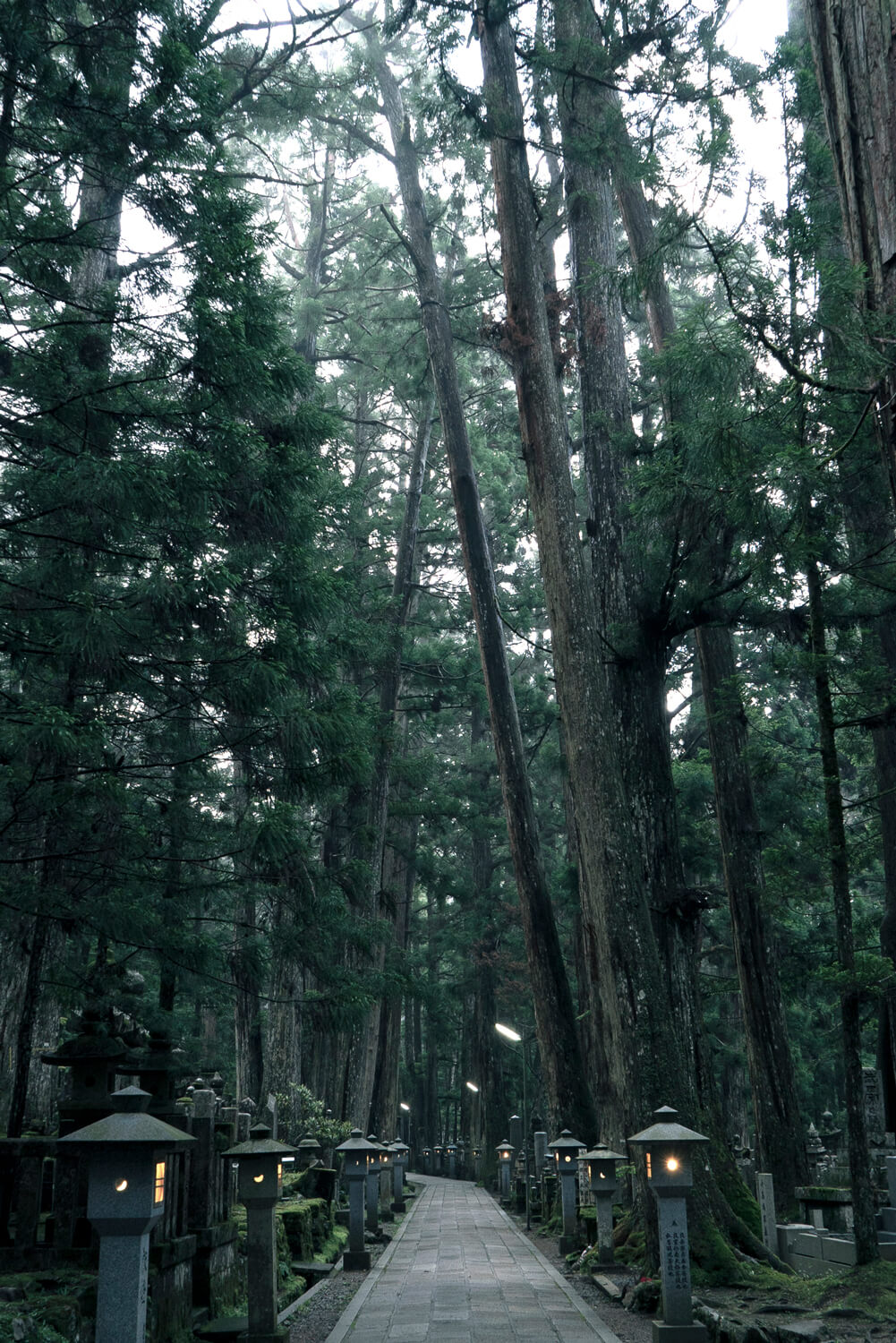Across the Border and Into the Sacred Koyasan

The squealing noise of the train as we approach Koyasan comes across as a warning sign. We are about to cross the border dividing the bustling lower world (gekai) from the celestial world (tenkai) that lies ahead of us. A curious anecdote for most of us, the division feels very real for the hundreds of Buddhist monks living in the area.
It was in 819 when Kobo Daishi, founder of the Esoteric Shingon school of Buddhism, consecrated Koyasan. Located in an alpine basin and surrounded by eight mountain peaks, this place is said to resemble a lotus flower, symbol of enlightenment. Not only that, but legend has it that Kobo Daishi threw a trident-shaped instrument from China that made it all the way to Koyasan, where the monk would later find it with the help of a hunter. All indications seemed to suggest that Koyasan was the ideal place for Kobo Daishi to establish his monastic center. And it was right where the instrument fell where, after being granted permission from the emperor, he would build his lecture hall. Later, more and more buildings would be added to the area that is now known as the Danjo Garan temple complex.

After its founding, roads to reach Koyasan (completely inexistent until then) started appearing, converging all of them in a total of seven primary entrances. The main one, called Choishi-michi, is marked by a total of 180 choishi or stone signposts, each symbolizing the five elements that make up the universe — space, wind, fire, water, and earth. The trail, still walkable today, is proof of all the beauty that the mountainous prefecture of Wakayama has to offer. Whether this beauty was enough of an incentive for the people who would transport the materials needed for the construction of the complex up through its steep slopes, we cannot know. But if not on the way, they might have found the reward at its finishing line, in the form of one of the most beautiful sunsets in Japan. Chasing the magic of the golden hour we head next to Okunoin, the biggest cemetery in Japan. Walking aimlessly at dusk, when the last rays of the day are filtered through the centenary cedars and more than 200,000 tombstones, you cannot help but enter in some sort of meditative state. You would not be alone on this; in the mausoleum found at the back of the cemetery, Kobo Daishi is believed to be —still alive— in a state of eternal meditation.
Once sheltered by the celestial world of Koyasan and its 117 temples (striking figure given the small extent of the area but that pales in comparison with the 1812 temples that once existed), it becomes difficult to return to the ‘lower world’. In Koyasan the extremes, the noise, disappear and only the subtleties of the middle ground remain. Pure tones such as those of the sounds of the nature that surrounds us, the chanting of sutras in Okunoin or the beats of the taiko drums played during the morning rituals. And not only sounds, but also the delicate notes of the shoji vegetarian cuisine that is served in the temples and some of the restaurants in town. A new world of flavours that would normally hide behind more intense ones suggestively reveals itself here. Koyasan is, in its essence, a place that invites you to stand in the silences, in the in-betweens, to discover that in these there is still much to be discovered.



TRENDING
-
Hiroshi Nagai's Sun-Drenched Pop Paintings, an Ode to California
Through his colourful pieces, the painter transports viewers to the west coast of America as it was in the 1950s.

-
A Craft Practice Rooted in Okinawa’s Nature and Everyday Landscapes
Ai and Hiroyuki Tokeshi work with Okinawan wood, an exacting material, drawing on a local tradition of woodworking and lacquerware.

-
The Tattoos that Marked the Criminals of the Edo Period
Traditional tattoos were strong signifiers; murderers had head tattoos, while theft might result in an arm tattoo.

-
David Bowie Dressed by Kansai Yamamoto
The English singer was strongly influenced by 'kabuki' theatre and charged the Japanese designer with creating his costumes in the 1970s.

-
‘Seeing People My Age or Younger Succeed Makes Me Uneasy’
In ‘A Non-Conformist’s Guide to Surviving Society’, author Satoshi Ogawa shares his strategies for navigating everyday life.





